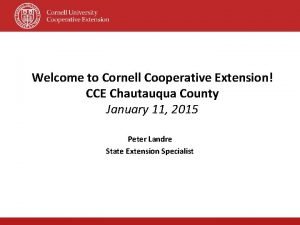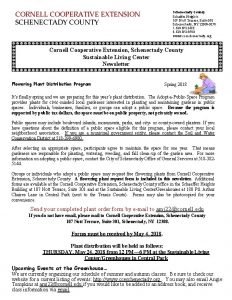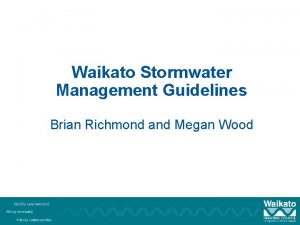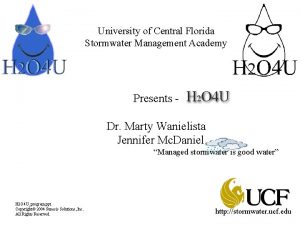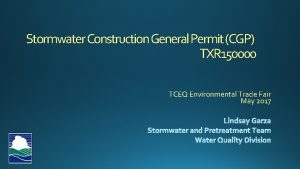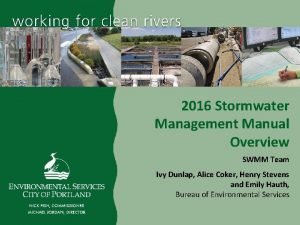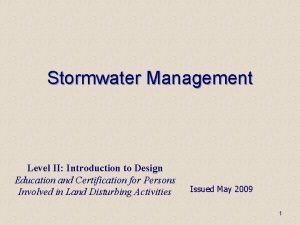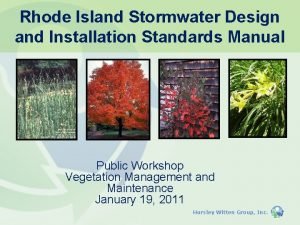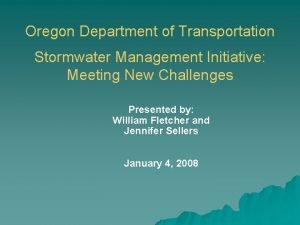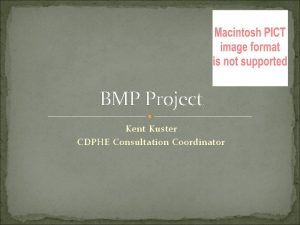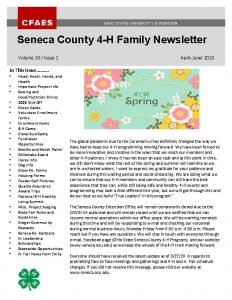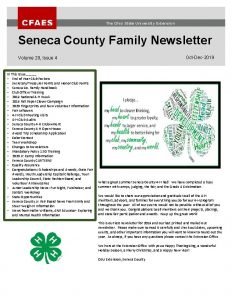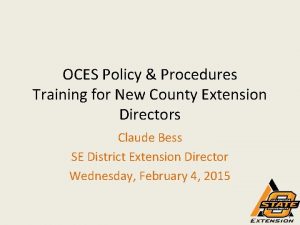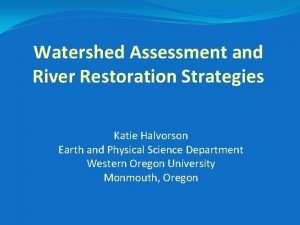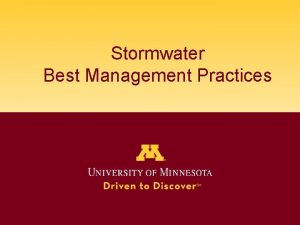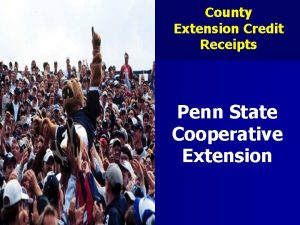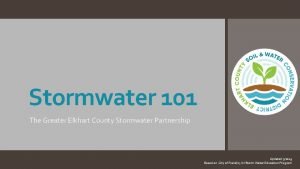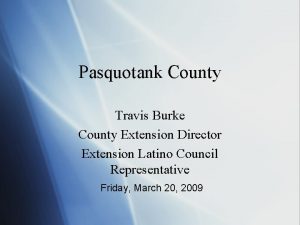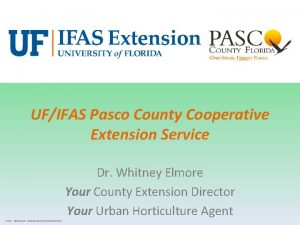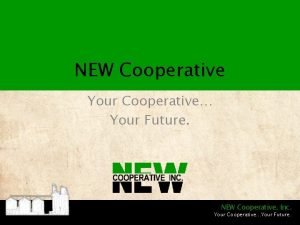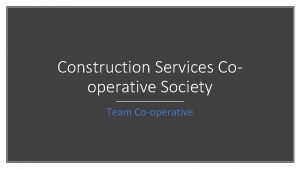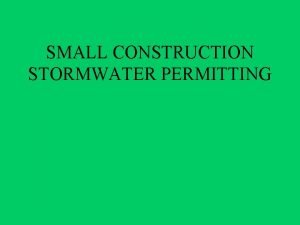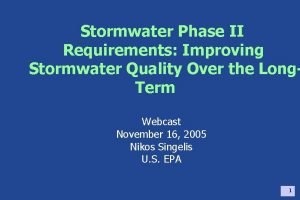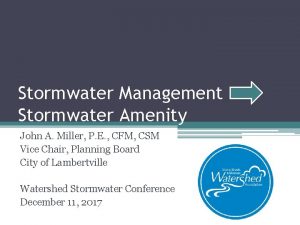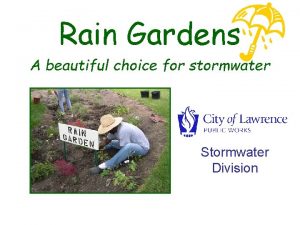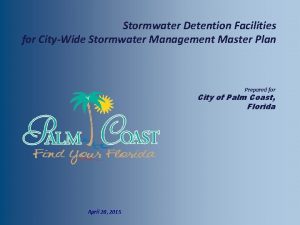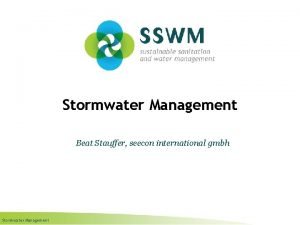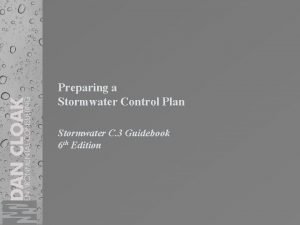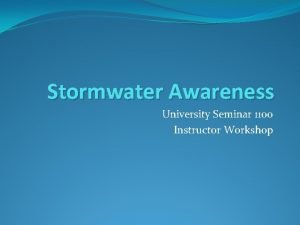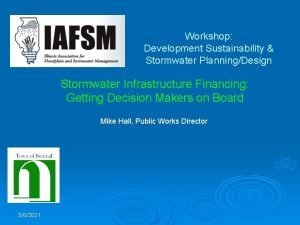Cooperative Extension Service Stormwater Training Katie Teague County



























- Slides: 27

Cooperative Extension Service Stormwater Training Katie Teague County Extension Agent- Agriculture/Water Quality

What is Extension? êDivision of the Land-Grant Universities located in all 50 states & Puerto Rico ê“Cooperative” effort Federal, State & county partnership ê Outreach & Education provide informal public education relay research information

NWA Regional Stormwater Education Program Since July 2004… University of Arkansas Cooperative Extension Service 12 Cities Benton and Washington Counties U of A – Fayetteville Campus

By working together, the Benton and Washington County MS 4 s are: • Educating each other about stormwater • Reducing the financial cost for implementing mandated stormwater control measures • Increasing the effectiveness of public education and participation programs • Protecting water quality on a regional basis

Let's take a quiz…

Stormwater Dynamics

What is stormwater? Runoff from natural precipitation, such as rain events and snow melt and other surface runoff and drainage


What Is a Watershed? A watershed is the area of land that all drains to a particular point Center for Watershed Protection

Natural Ground Cover 40% Evapotranspiration 10% Runoff 25% Shallow infiltration Source: U. S. EPA 25% Deep infiltration


Source: USDA/NRCS

Source: U. S. EPA


75 – 100% Impervious surface 30% Evapotranspiration 55% Runoff 10% Shallow infiltration Source: U. S. EPA 5% Deep infiltration

Many Forms of Impervious Cover in the Urban Landscape Sidewalks Roads Driveways Parking Buildings Center for Watershed Protection

Impervious cover, such as this parking, lot, is impermeable to rainfall, creating runoff flowing into storm drains.

Impervious Cover Influences Wet Weather Stream Flow When it rains, a large amount of water. . . Runs off of impervious surfaces Enters the stormdrain system Is directed to nearby streams Center for Watershed Protection

Impervious Cover Influences Wet Weather Stream Flow The large amount of stormwater runoff in the stream system can cause: More Frequent Flooding Higher Flood Levels Center for Watershed Protection

Impervious Cover Influences Stream Shape and Size Large amounts of stormwater runoff due to impervious cover can: Ø Erode stream banks, making the banks steeper and the channel wider Ø Deposit soil on the stream bottom, making the stream more shallow Ø Cause straightening of the channel Center for Watershed Protection

Stream Quality is Related to Impervious Cover 8 -10% < 5% > 65% Impervious Cover 20% 30% Center for Watershed Protection

Storm Drainage System: All surfaces, structures and systems that contribute to or convey stormwater runoff



Pollutant: Any substance that contributes to water pollution, including: Rubbish, garbage, solid waste, litter, debris, yard waste, pesticides, herbicides, fertilizers, pet waste, animal waste, domestic sewage, industrial waste, mechanical fluid, oil, motor oil, grease, petroleum products, antifreeze, surfactants, solvents, detergents, cleaning agents, paint, heavy metals, toxins, household hazardous waste, small quantity generator waste, hazardous substances, hazardous waste, soil and sediment


Stormwater Issues… Developed and disturbed land contributes to problems in terms of: Water quality Water quantity Other pollutants enter storm sewers and pollute stormwater: Illicit discharges Illicit connections
 Cce chautauqua
Cce chautauqua Oklahoma cooperative extension service
Oklahoma cooperative extension service Helen teague
Helen teague Greg teague
Greg teague Cornell cooperative extension schenectady
Cornell cooperative extension schenectady Brand leveraging strategies
Brand leveraging strategies Waikato stormwater management guideline
Waikato stormwater management guideline Ucf stormwater academy
Ucf stormwater academy Tceq small construction site notice
Tceq small construction site notice Portland stormwater management manual
Portland stormwater management manual Stormwater management
Stormwater management Ri stormwater manual
Ri stormwater manual Stormwater
Stormwater Rhode island stormwater manual
Rhode island stormwater manual Cdphe stormwater
Cdphe stormwater Seneca county extension office
Seneca county extension office Seneca county 4h
Seneca county 4h Seneca county 4-h extension office
Seneca county 4-h extension office Osu extension muskingum county
Osu extension muskingum county Lancaster county extension
Lancaster county extension Katie halvorson
Katie halvorson Katie simandl
Katie simandl What is english 10-1
What is english 10-1 Katie truss
Katie truss Katie seibel
Katie seibel Katie rossini
Katie rossini Katie lewandowski
Katie lewandowski Katie dallam
Katie dallam
